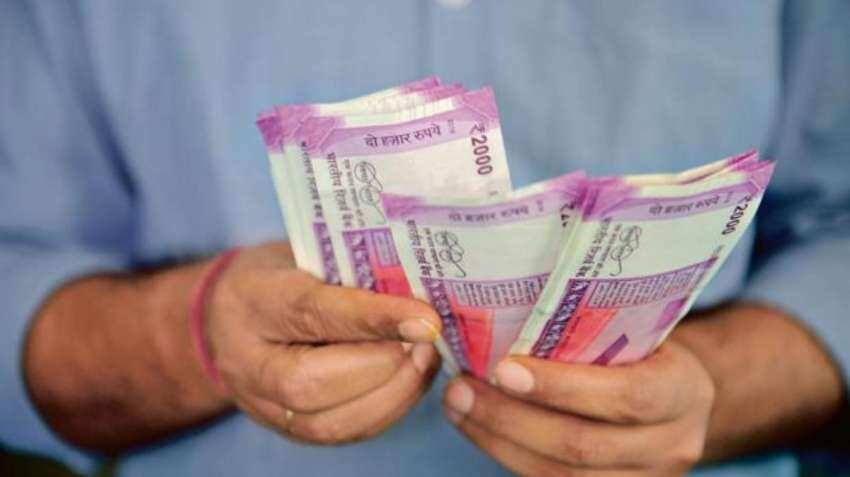Will banks be forced to sharply hike their deposit rates in coming months? Icra Ratings report says this
At 1.5 per cent of total deposits as of July 1, 2022, CDs are yet to touch the peak level of June 2011 when they were at 8.3 per cent of total deposits, the agency said

Given the rising interest rate regime along with increasing credit demand, banks will be forced to sharply hike their deposit rates in coming months, a report said on Thursday.
Indicating the rising deposit rate regime, Certificates of Deposit (CDs), which banks use heavily to borrow funds, have been steadily rising and are already at multi-year high, according to an analysis by Icra Ratings.
At 1.5 per cent of total deposits as of July 1, 2022, CDs are yet to touch the peak level of June 2011 when they were at 8.3 per cent of total deposits, the agency said.
Similarly, the spread for CDs over average deposit rates of banks has been on a sharp upswing as the hike in deposit rates has been more calibrated. As a result, banks with high share of wholesale/interest-rate-sensitive deposits to see sharper rise in funding costs, notes the report.
Banks' reliance on CDs has been increasing in recent months to fund incremental credit demand with the CD outstanding volume rising 243 per cent on-year as of July 1, 2022, to Rs 2.4 lakh crore, the report said.
Also, rising bond yields and consequently on CDs has widened the gap between the yield on CDs compared to the average card rates on bank deposits. The spread on bank CDs rose to 170 basis points (bps) over their average six-month deposit rates in July compared to just 30 bps in April 2022.
While banks have been more calibrated in hiking their card rates on deposits, interest rate hike on deposits will be aggressive in the coming months as credit growth picks up further, leading to a decline in banking system liquidity, the report said without mentioning by how much level the rates may go up.
As the market enters the seasonally busy period for incremental credit demand, the systemic liquidity will come down further as deposit growth continues to lag the incremental credit growth. "We also expect a hike in the repo rate by 60 bps by September to 5.5 per cent, which will further push yields on various benchmark instruments like T-Bills up and hence the bank CD rates, thereby widening the spreads even more compared to bank deposit rates. This will force banks to start chasing deposits aggressively by offering higher rates in the next three quarters," opines Anil Gupta, a vice president with the agency.
The 90-bps hike in the policy rates since May has resulted in the yields on various money market instruments as well as bonds increasing sharply, while floor rate rose 130 bps during this period. As the surplus liquidity comes down, the money market rates are now anchored to the repo rate instead of the reverse repo rate as was the case when the Covid pandemic began.
As a result, the daily average yields on short-term instruments like the 91-day T-bill, 182-day T-bill and 364-day T-bill spiked to 5.2 per cent, 5.7 per cent and 6.2 per cent, respectively, in July 2022 from 3.8 per cent, 4.3 per cent and 4.6 per cent, respectively in March 2022.
The impact of rising rates has been borne by the corporate bond market with issuances falling to four-year low in the first quarter amidst higher investor risk aversion on fear of mark-to-market losses. This prompted large borrowers to shift to banks for their incremental funding requirements, leading to a spike in bank credit growth which is the highest in the past three years, even as deposit growth lagged credit growth.
Since large wholesale depositors have alternate options to park surplus funds at market determined rates, banks with a higher share of wholesale funding or rate-sensitive deposits will have to hike their deposit rates faster. This will prompt other banks also to hike their deposit rates, Gupta added.
Get Latest Business News, Stock Market Updates and Videos; Check your tax outgo through Income Tax Calculator and save money through our Personal Finance coverage. Check Business Breaking News Live on Zee Business Twitter and Facebook. Subscribe on YouTube.
RECOMMENDED STORIES
07:09 PM IST











 Maharashtra will play key role in achieving India's $5 trillion economy goal: Minister Aditi Tatkare
Maharashtra will play key role in achieving India's $5 trillion economy goal: Minister Aditi Tatkare India's GDP growth to pick up in third quarter compared to first half of FY25: ICRA report
India's GDP growth to pick up in third quarter compared to first half of FY25: ICRA report GST collection grows 9% to Rs 1.87 lakh crore in October
GST collection grows 9% to Rs 1.87 lakh crore in October IMF says India's GDP growth to moderate to 7% in 2024 and 6.5% in 2025
IMF says India's GDP growth to moderate to 7% in 2024 and 6.5% in 2025  India poised to be third largest global economy by 2030, rising population presents challenges: S&P
India poised to be third largest global economy by 2030, rising population presents challenges: S&P